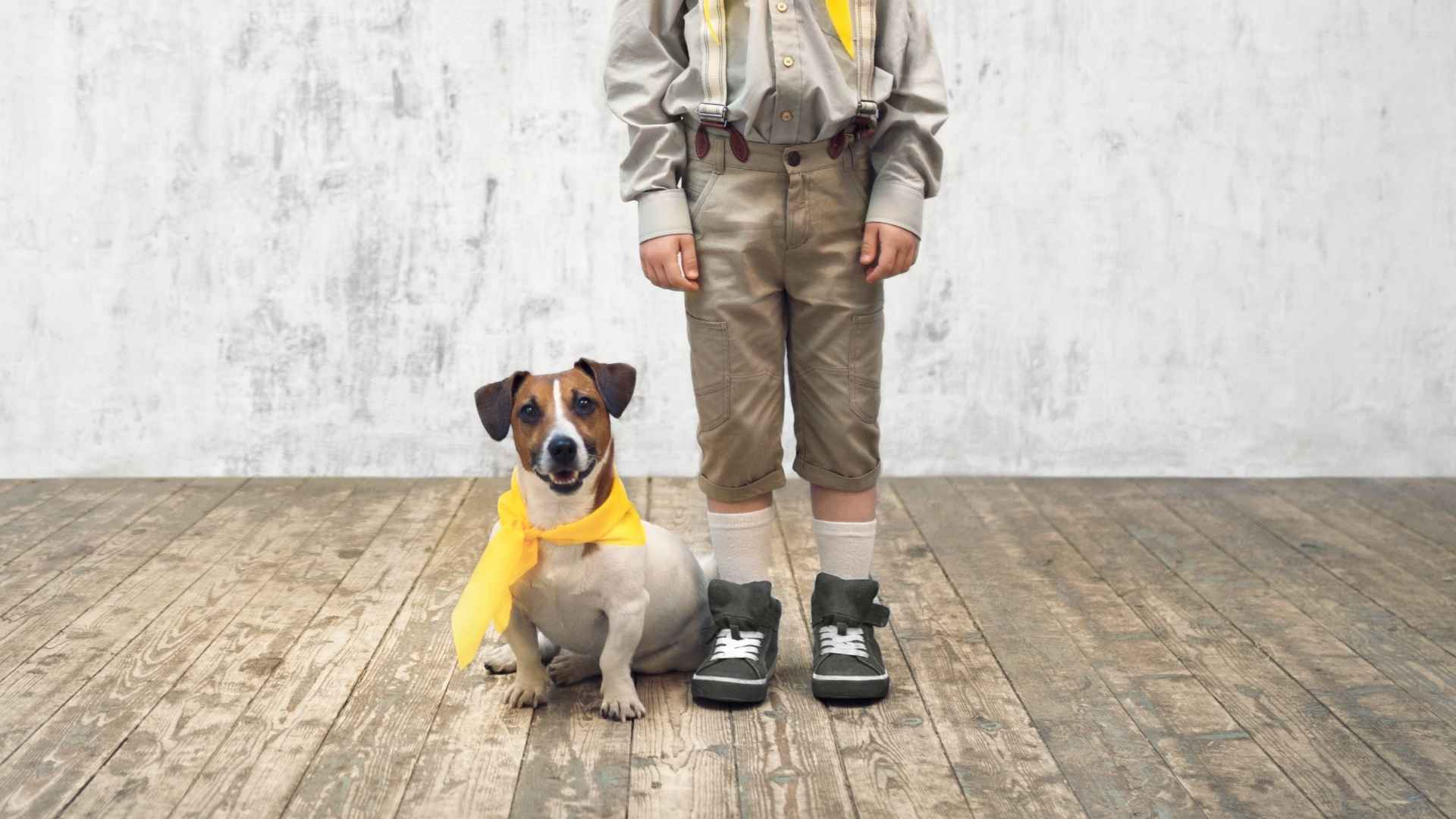Dogs have long been beloved companions, but for many children, they are also the ultimate playmates, confidants, and partners in imagination. Some dogs don’t just tolerate a game of dress-up—they embrace it with patience and charm, happily letting little hands adorn them with superhero capes, princess crowns, or silly hats.
These calm, good-natured breeds seem to understand that being part of a child’s world sometimes means playing along with their most creative ideas.
Choosing the right dog for a family isn’t just about temperament; it’s about finding a breed that thrives in a household full of laughter, activity, and occasional chaos. The dogs on this list bring a unique mix of gentleness, tolerance, and affection, making them perfect for kids who love to include their furry friends in every adventure, even the ones that involve tea parties and costumes.
From easygoing giants to patient lap dogs, these breeds remind us that the best family pets don’t just love—they adapt, bringing joy and calmness to every playful moment.
Dog Breeds That Calmly Let Kids Dress Them in Costumes
1. Cavalier King Charles Spaniel
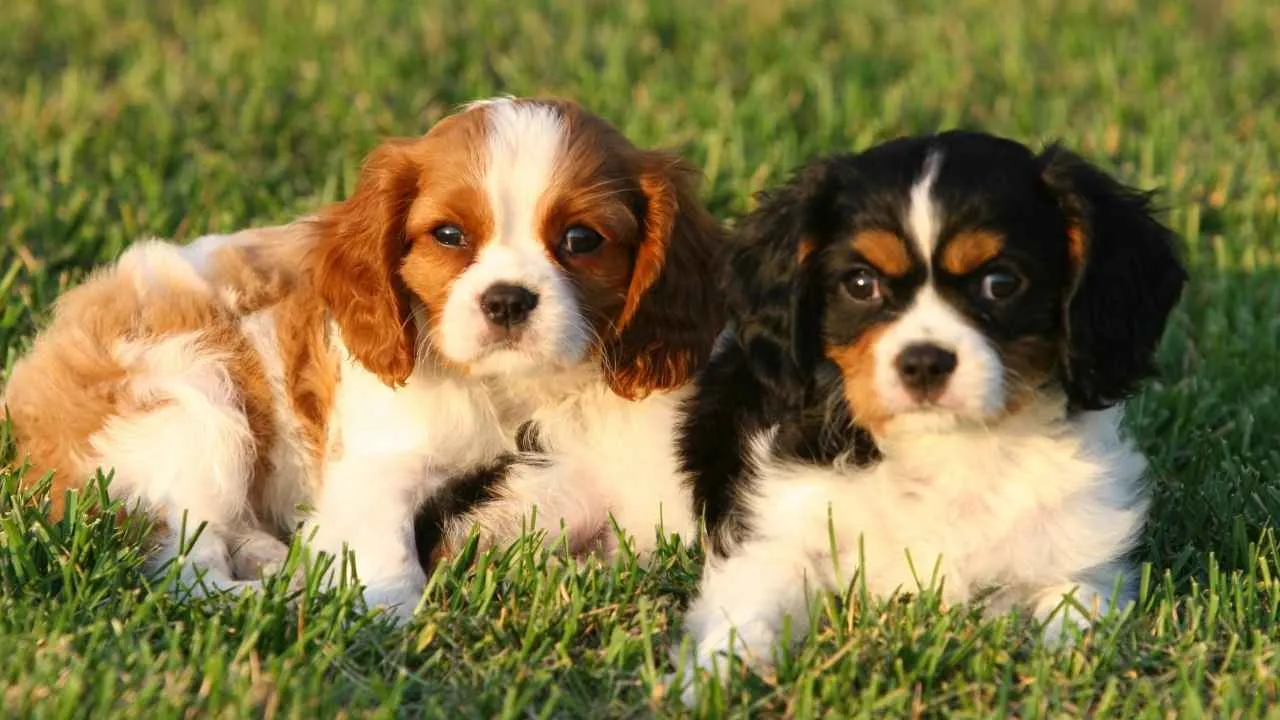
The Cavalier King Charles Spaniel is a small, elegant toy breed with a rich history tied to British royalty. The AKC states that Cavaliers bring together the gentle affection of a toy breed with the energy and athleticism of a sporting spaniel.
Known affectionately as “Cavaliers,” these dogs originated in England, developed from the English Toy Spaniel in the early 1900s to resemble the spaniels adored by King Charles II. Standing about 12–13 inches tall and weighing 13–18 pounds, they are compact yet graceful, with a silky, feathered coat that can come in colors like Blenheim, tricolor, ruby, or black and tan.
These small dogs were bred to be lap dogs and companions, and their affectionate, people-oriented temperament makes them natural family favorites. With a lifespan of 12–15 years, they bring years of cuddles, playfulness, and joy into a household.
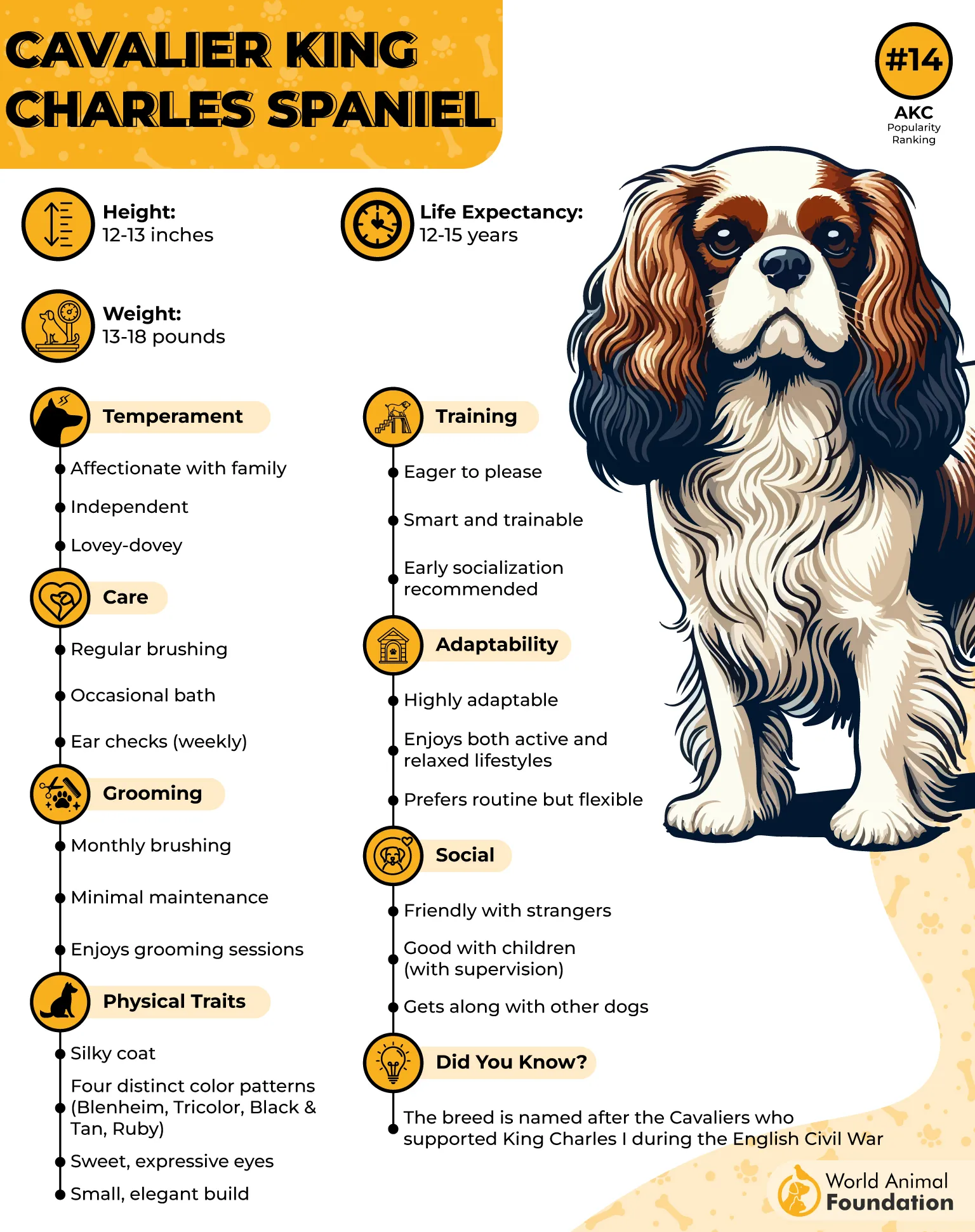
Care Needs
These tiny dogs thrive as indoor companions, happiest when close to their humans. Their long, silky coat requires regular brushing to prevent tangles, particularly around their ears and chest. Routine grooming sessions—along with ear checks to prevent infections—are essential.
These dogs need daily walks and playtime to stay healthy, but aren’t overly demanding in energy. Because of their gentle nature, they do best with calm, kind handling and positive reinforcement training.
2. Newfoundland
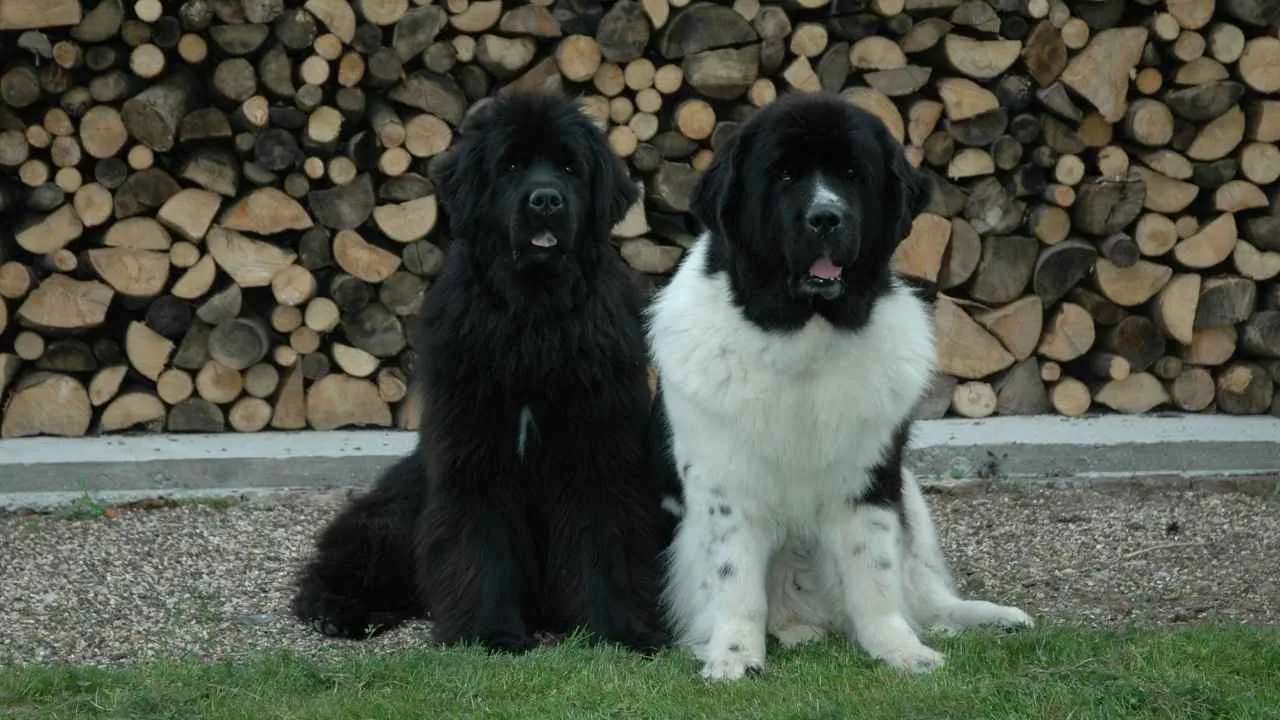
The Newfoundland, often affectionately called the “Newfie,” is a massive working dog known for its calm and gentle nature. PetMD notes that the breed began in Newfoundland, Canada, where the dogs assisted fishermen and acted as water rescue dogs.
This breed was developed from crosses between local dogs and Great Pyrenees brought by Basque fishermen in the 17th century. Standing 26–28 inches tall and weighing 100–150 pounds, these dogs are true gentle giants.
Their thick, double coat—typically black, brown, gray, or black-and-white—provides insulation for their historic water rescue duties. Classified in the Working Group, Newfoundlands have an average lifespan of 9–10 years and are famous for their affectionate temperament, making them a beloved “nanny dog” for children.
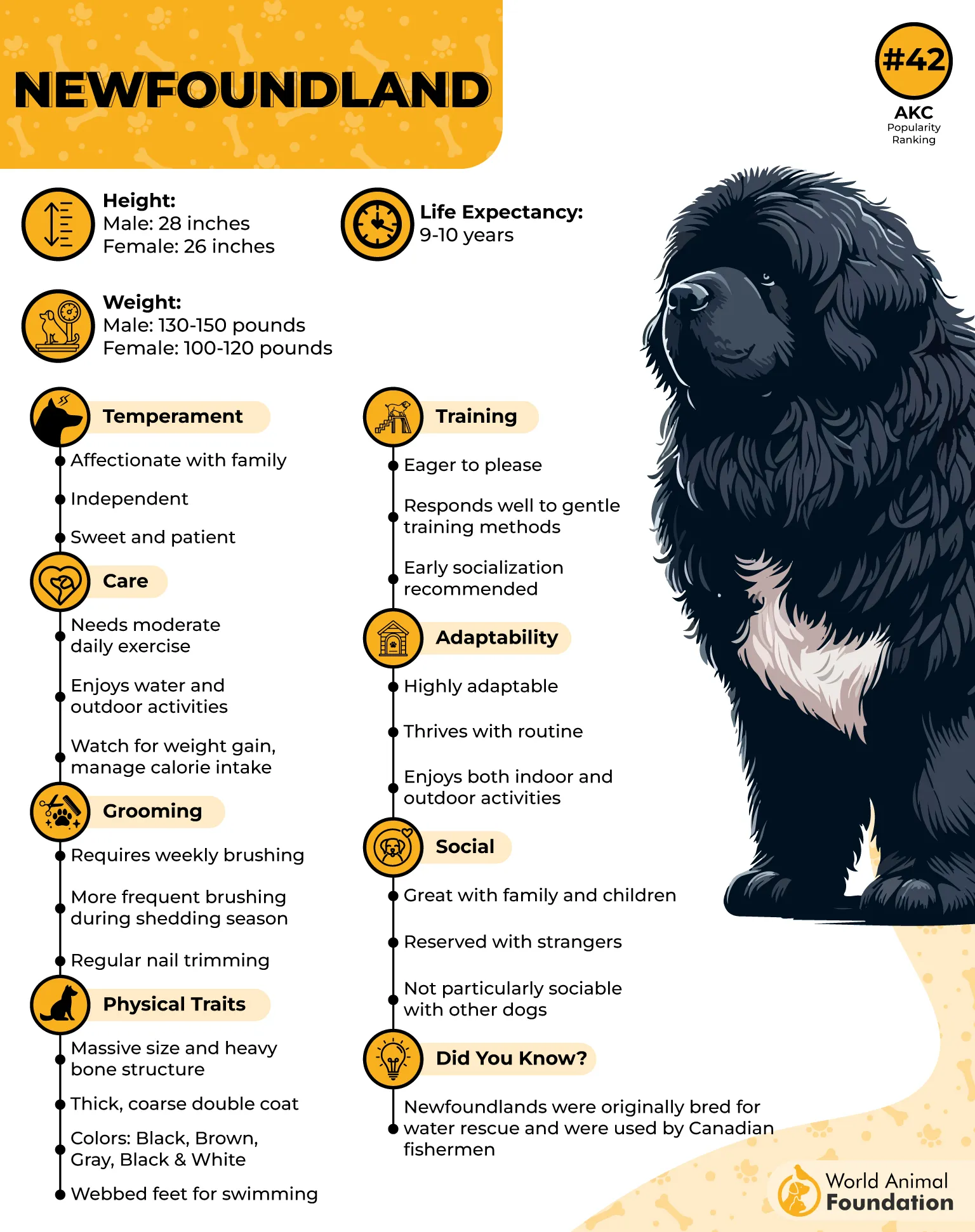
Care Needs
Newfoundlands demand consistent grooming to maintain their dense double coat and to manage the heavy shedding that comes with it. Brushing several times a week is essential, and many owners also need to wipe away drool daily—a hallmark trait of the breed.
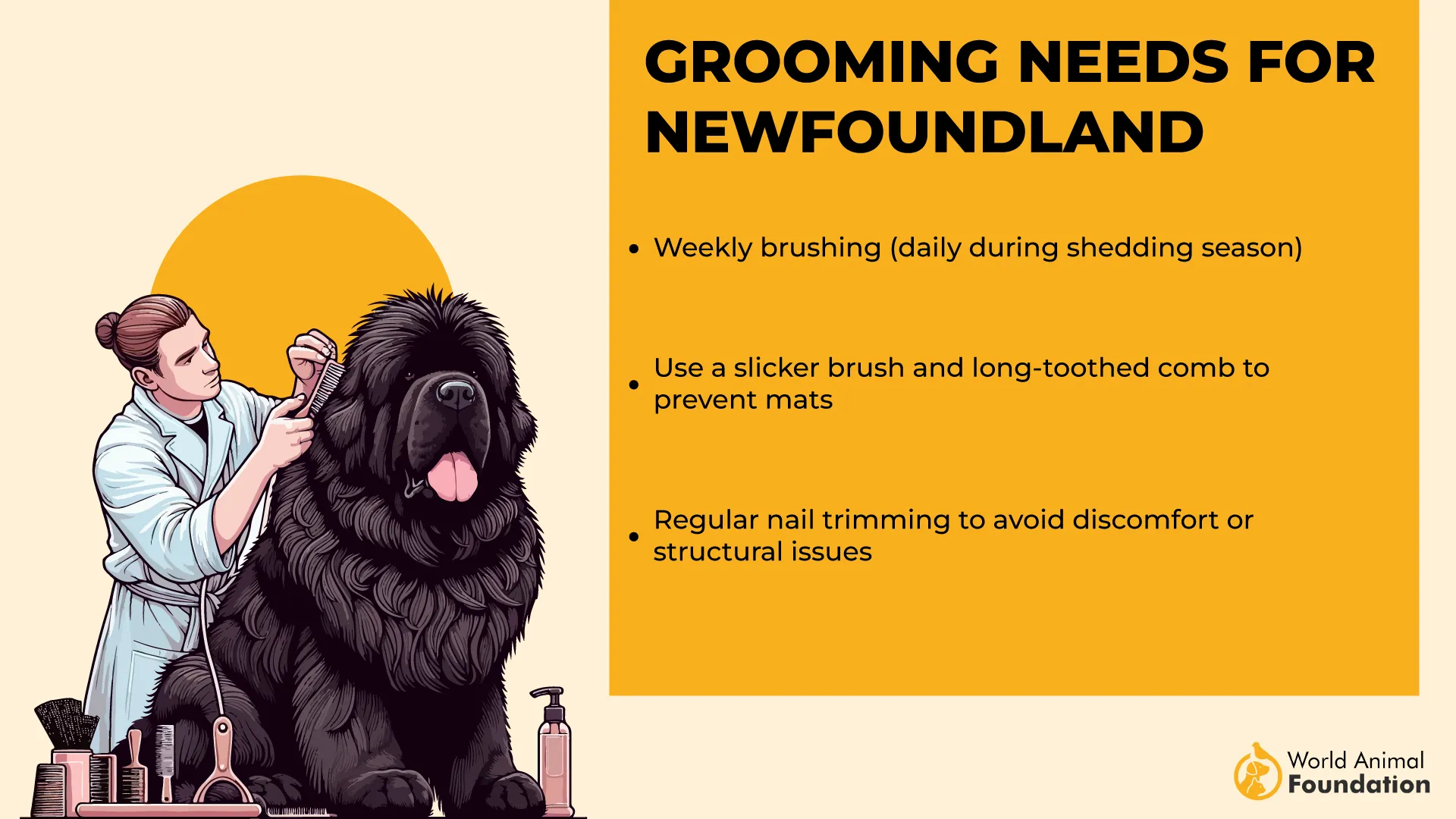
These large dogs require regular exercise, like walks or swimming, to stay fit, though their energy level is moderate compared to their size. Mental engagement is also important, as Newfies are intelligent and thrive when given purpose.
3. Labrador Retriever
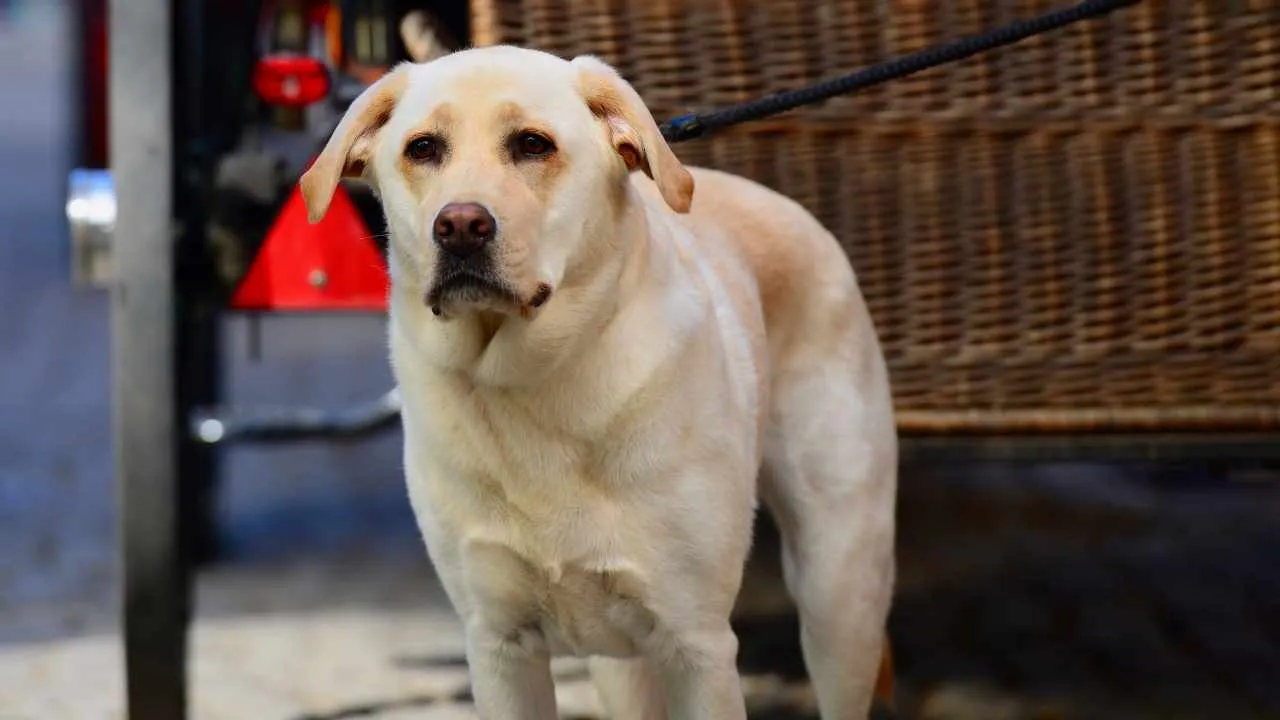
The Labrador Retriever, affectionately called the “Lab,” is one of the world’s most beloved breeds and an enduring family favorite. Originating from Newfoundland in the 1800s, Labs were brought to England by fishermen and developed into the ultimate gun dog, prized for their ability to retrieve in water and on land.
With their dense double coat in black, yellow, or chocolate, wide head, kind eyes, and signature otter-like tail, these dogs radiate friendliness. WebMD states that they are medium to large in size and have a solid build with powerful legs and shoulders that enable them to run quickly.
Standing 21.5–24.5 inches tall and weighing between 55–80 pounds. Their joyful personality, trainability, and patience make them naturals around kids, especially when play involves fetch or silly costumes.
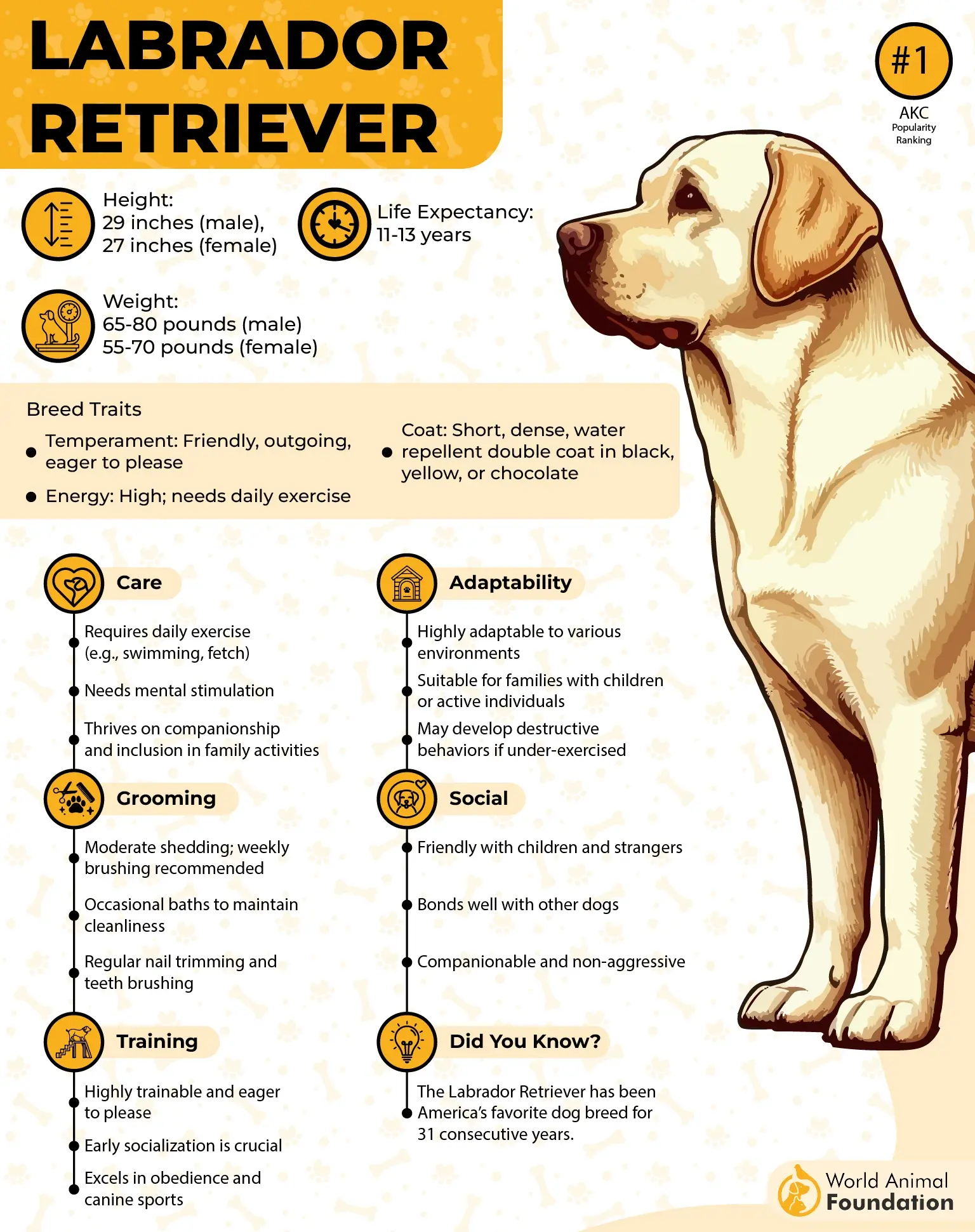
Care Needs
Labs are energetic and require about two hours of daily exercise to stay healthy and happy. They shed moderately to heavily, so frequent brushing is essential to manage their double coat.
Because Labs love food, portion control is crucial to avoid weight gain. Mental stimulation—through games, training, and interaction—keeps them from becoming bored or destructive.
4. Beagle
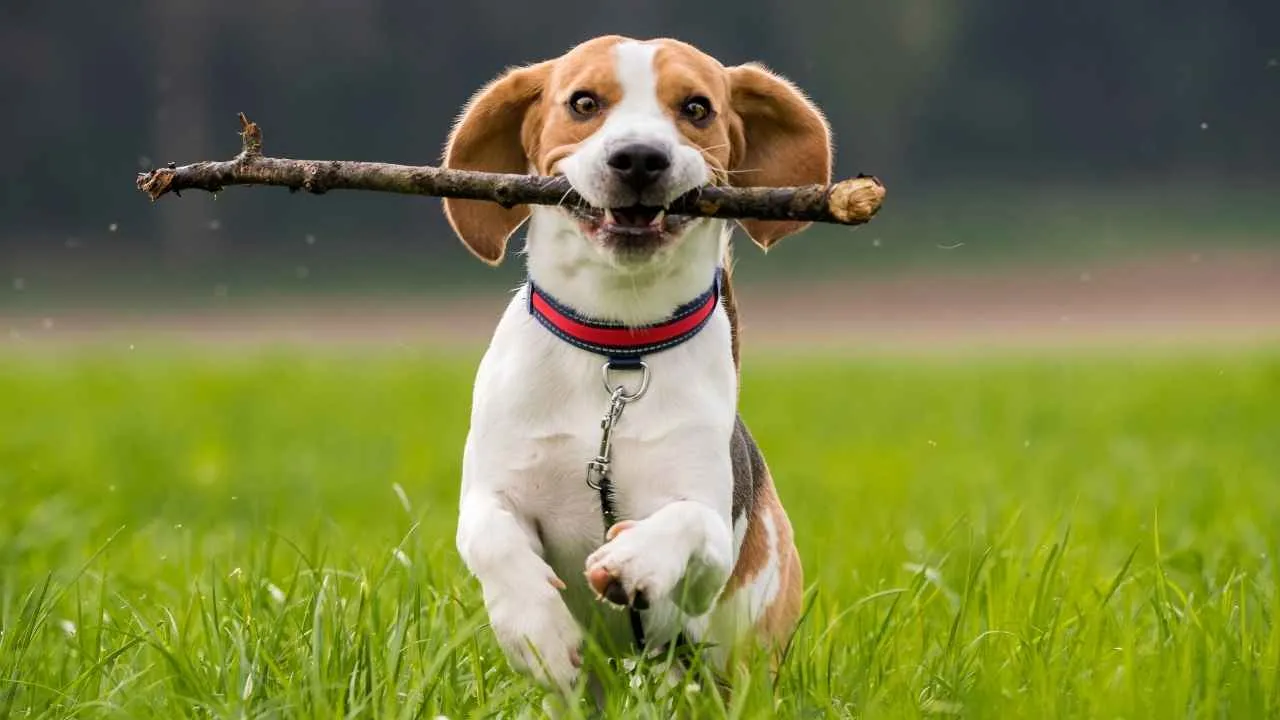
The Beagle is a cheerful and adaptable hound originating from Great Britain, renowned for its keen nose and easygoing personality. Standing 13–15 inches tall and weighing 20–30 pounds, Beagles are sturdy little dogs with an affectionate nature that has made them one of the most beloved family companions.
Their short, dense coats come in colors like tricolor, lemon, and red and white, and their floppy ears add to their undeniable charm. Originally bred to hunt rabbits and hares, Beagles remain active and inquisitive, with an average lifespan of 10–15 years.
Their friendly, tolerant temperament makes them ideal for households with children, and their love of companionship means they thrive when they can be part of daily family activities.
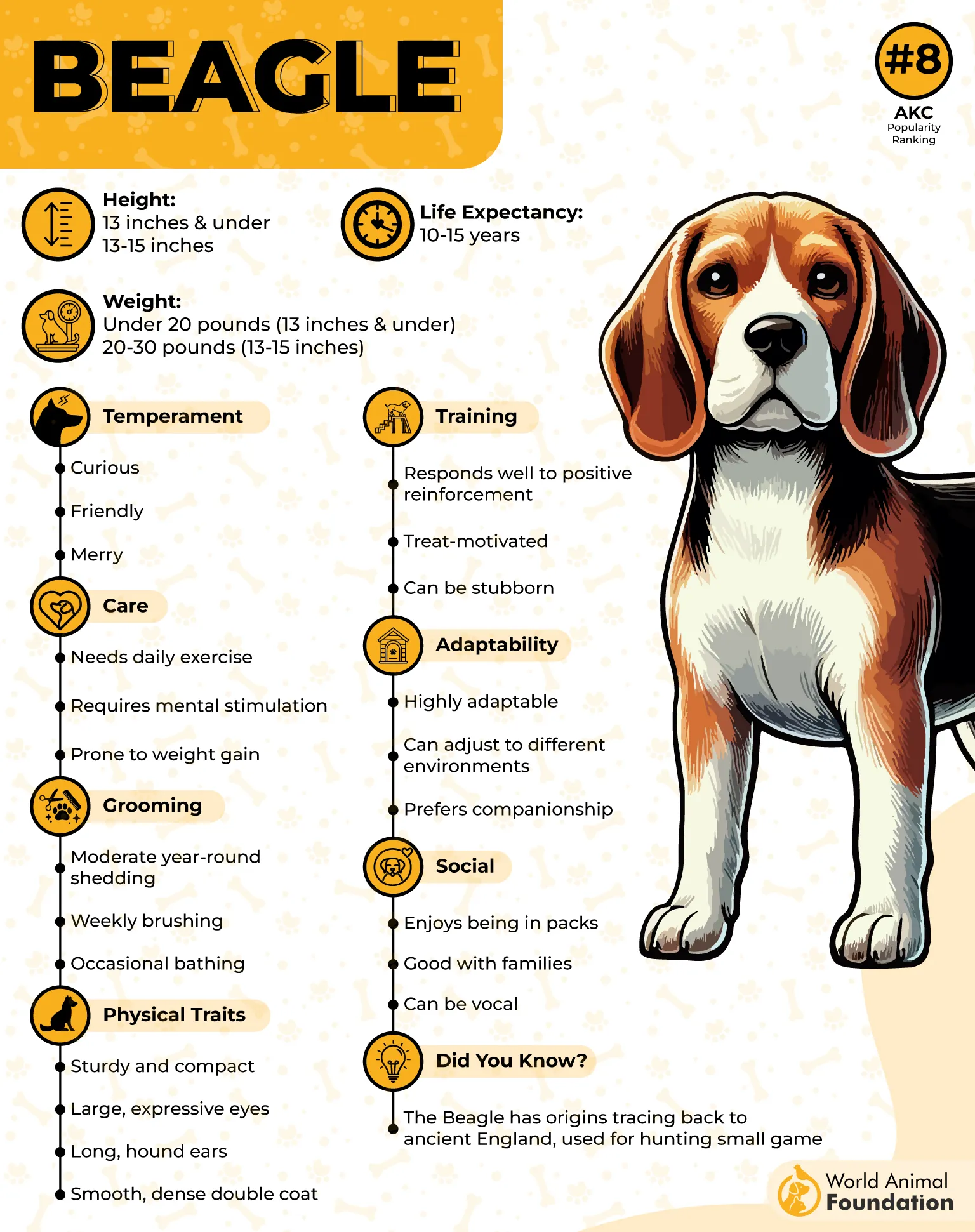
Care Needs
Beagles are energetic dogs that need at least an hour of exercise daily to stay happy and prevent mischief. They are prone to obesity, so measured meals and limited treats are crucial for maintaining a healthy weight.
Their floppy ears require regular cleaning to prevent infections, and weekly brushing helps manage their moderate shedding. Mental stimulation is just as important as physical activity, as bored Beagles can get into trouble by following their noses.
5. Golden Retriever
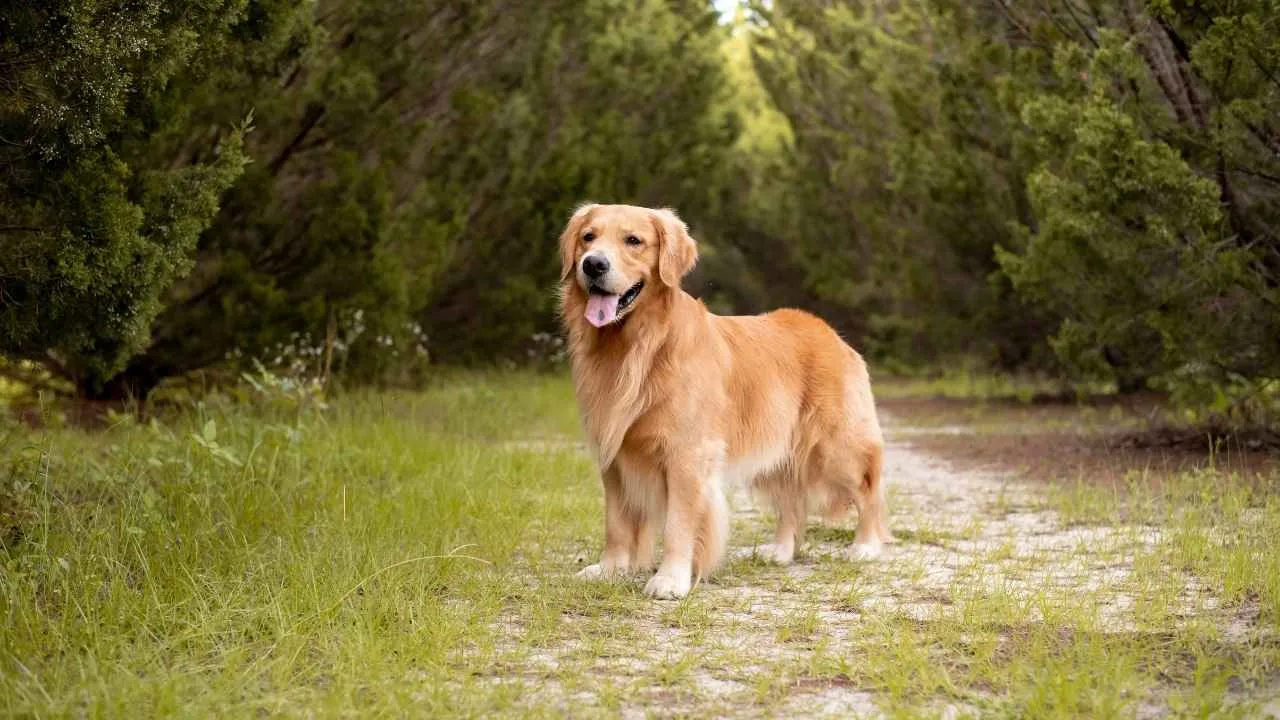
The Golden Retriever is often regarded as the epitome of a family dog—gentle, patient, and eager to please. Originating in 19th-century Scotland as a gundog, this breed was developed to retrieve game from both land and water.
Standing 21.5–24 inches tall and weighing 55–75 pounds, Goldens boast a thick, water-repellent double coat in shades ranging from pale cream to deep gold. They belong to the Sporting Group and typically live 10–12 years, known for their unwavering loyalty and affectionate nature toward children and adults alike.

Care Needs
Golden Retrievers require consistent grooming to manage their dense coats, which shed heavily year-round. Daily brushing helps prevent mats, especially around the ears and hindquarters, and keeps shedding under control.
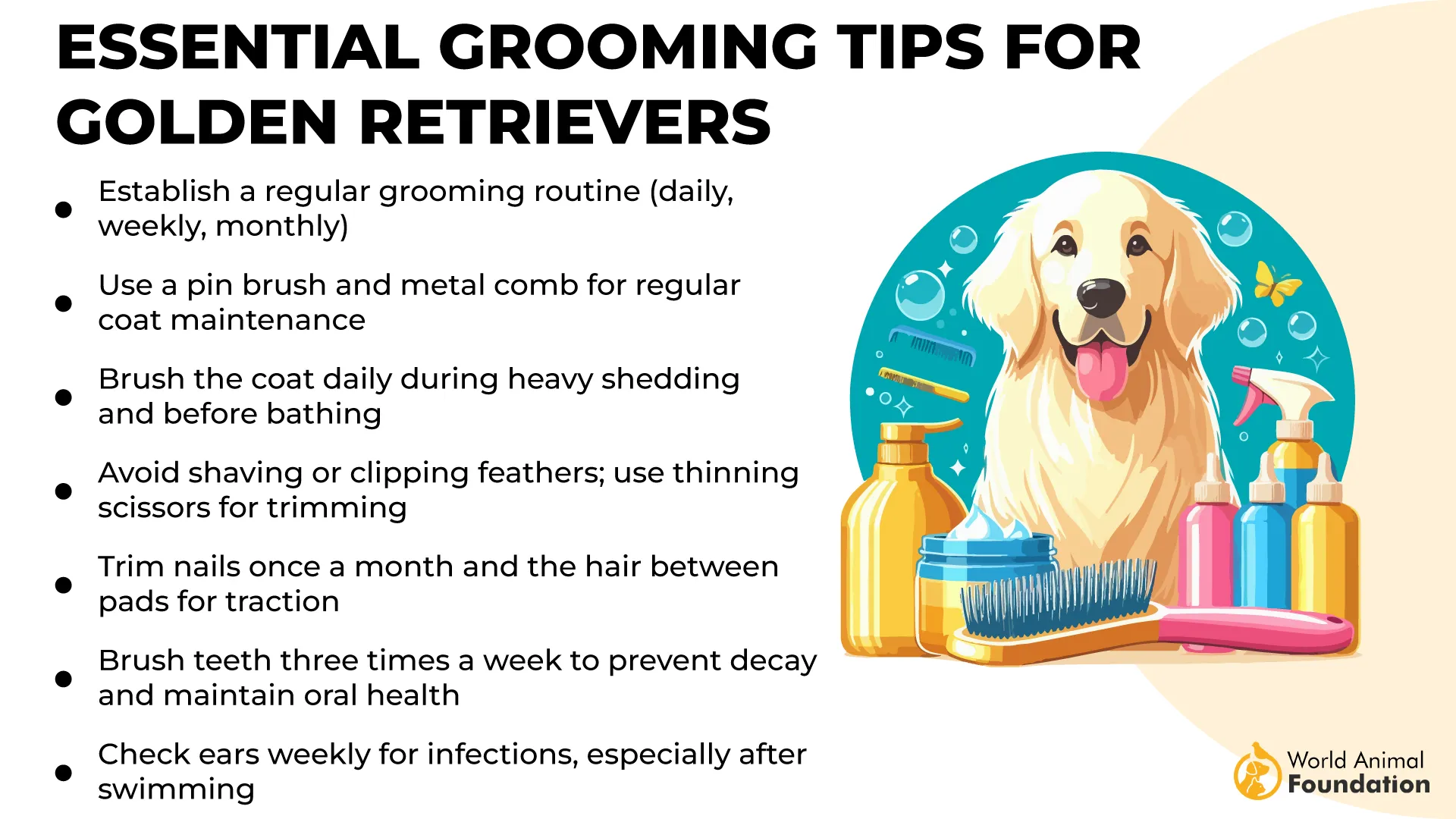
They also need at least an hour of daily exercise—long walks, swimming, or fetch games keep them physically and mentally stimulated. Regular vet check-ups are essential, as the breed can be prone to hip dysplasia and certain skin conditions.
Goldens thrive on close human interaction and don’t do well left alone for long stretches, as they crave companionship and involvement in family life.
6. Bulldog
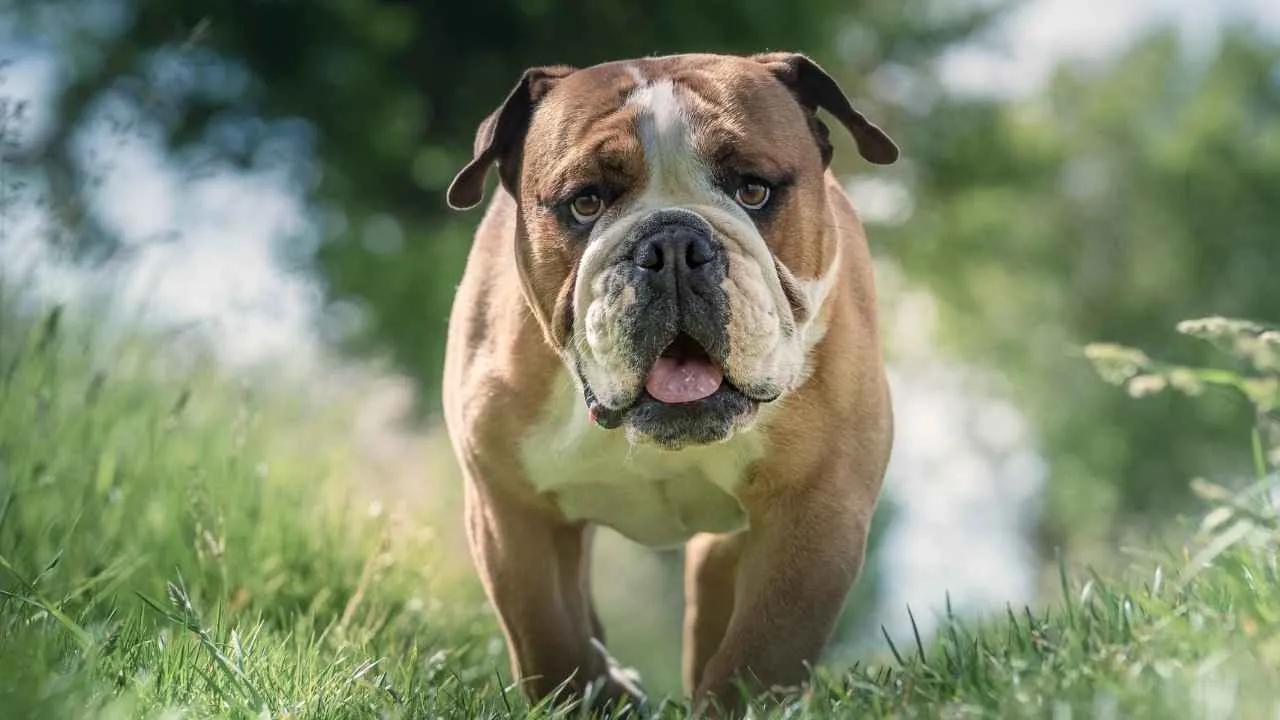
The Bulldog, also known as the English Bulldog, British Bulldog, or the affectionate nickname “Sourmug,” is one of the most iconic breeds in the world. Originally bred in 13th-century England for bullbaiting, today’s Bulldog has left that history behind to become a calm, gentle companion beloved by families everywhere.
This sturdy, low-slung dog stands about 13–15 inches tall and weighs between 40–50 pounds, with a signature wrinkled face, short muzzle, and muscular build. Bulldogs are part of the Nonsporting Group and typically live 8–10 years.
Their even temperament and famously tolerant nature make them wonderful with children, which is why they’re often seen letting kids dress them up in costumes or including them in playtime.
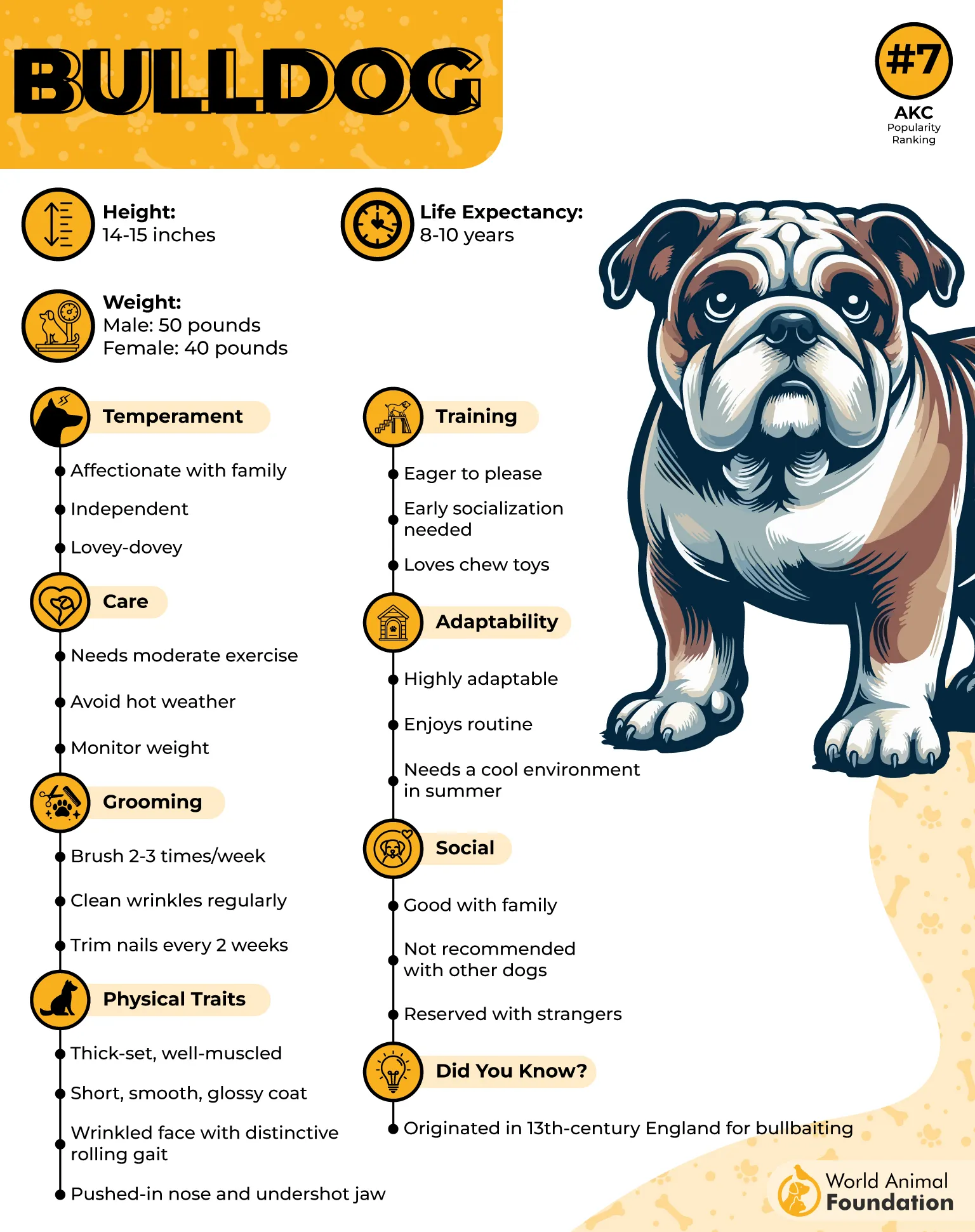
Care Needs
Bulldogs are low-energy but require daily short walks to stay healthy, as they can gain weight easily. Because they are a brachycephalic (short-nosed) breed, they are prone to breathing issues and should avoid intense exercise or heat. Regular cleaning of their facial wrinkles is essential to prevent skin infections, and their short coats need brushing a few times a week.
7. Collie
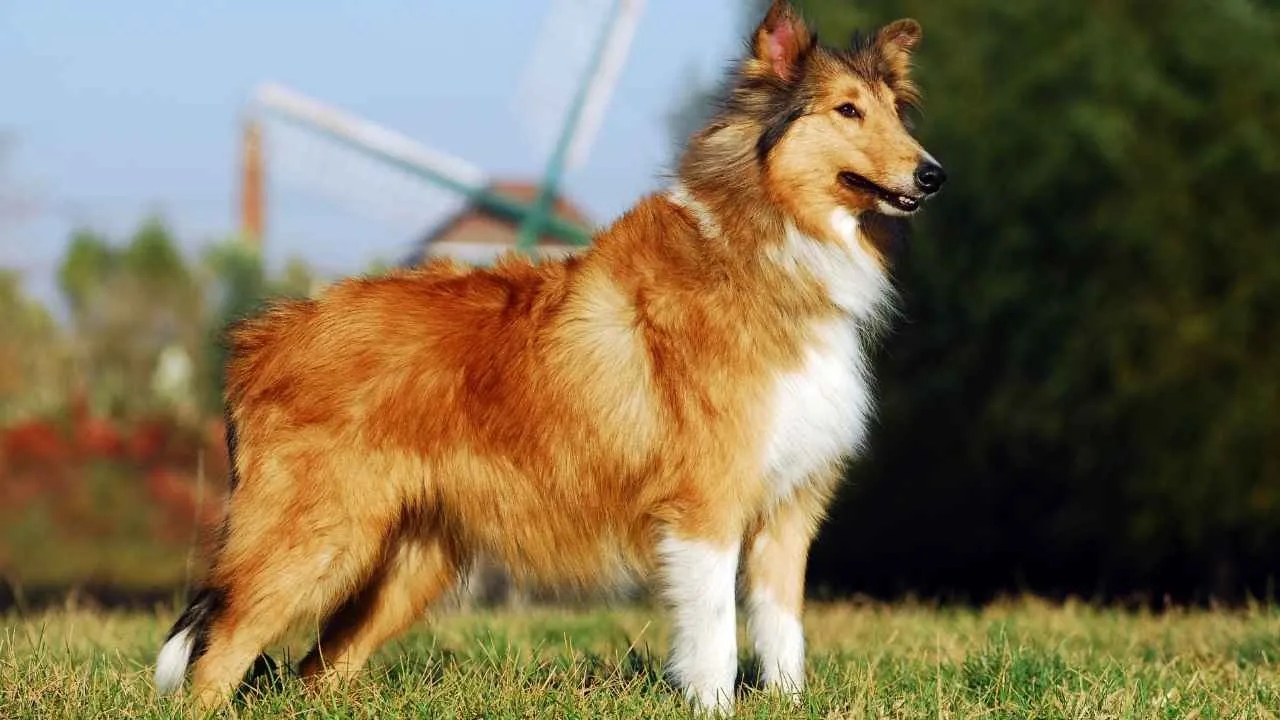
The Collie is an iconic herding dog, renowned for its loyalty, intelligence, and beauty. Originating from the rugged border regions of Scotland and England, the Collie has long been a trusted partner for shepherds, prized for its ability to manage livestock with a mix of gentle temperament and authority.
Known by names such as Scotch Collie and Highland Collie, this breed stands 18–22 inches tall and weighs between 30–55 pounds. Its striking double coat, often flowing in shades of sable, tricolor, or blue merle, gives it a regal appearance.
Collies typically live 12–15 years, thriving as both working dogs and beloved family companions thanks to their incredibly affectionate temperament and natural intuition.
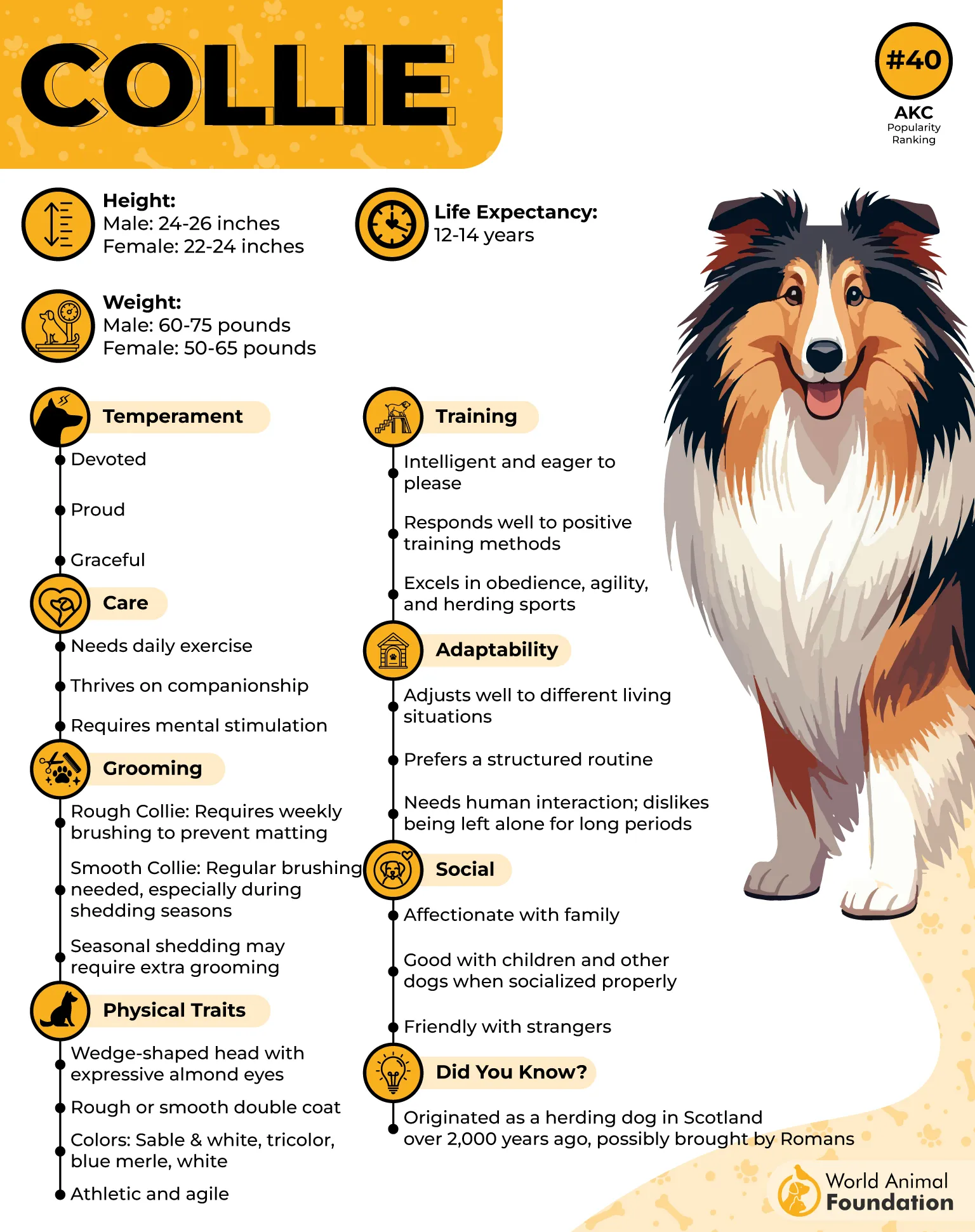
Care Needs
Collies have moderate grooming requirements due to their dense double coat, which needs brushing several times a week to prevent tangles and manage seasonal shedding.
Their active herding heritage means they require at least an hour of daily exercise—think long walks, games of fetch, or agility activities—to stay fit and mentally stimulated. Social, intelligent, and eager to please, Collies respond well to positive training and flourish in homes where they’re treated as a true part of the family.
Conclusion
Some dogs have a natural gift for being the center of playtime, and the best dog breeds for kids are often those with a calm, tolerant personality. Breeds like Bernese Mountain Dogs and others with an easygoing nature make dress-up games a fun, stress-free experience for everyone involved. Their willingness to sit patiently while a child fastens a cape or crown shows more than just obedience—it reflects deep trust and affection.
These are the dogs parents dream about, the ones who are incredibly patient, gentle, and joyful, often becoming the perfect breed for families who love creative play. Their ability to embrace silly moments, handle extra attention, and still wag their tails makes them not only delightful companions but cherished members of the household. For kids who dream of tea parties with pirates and superheroes by their side, these dogs turn those moments into lasting memories.


